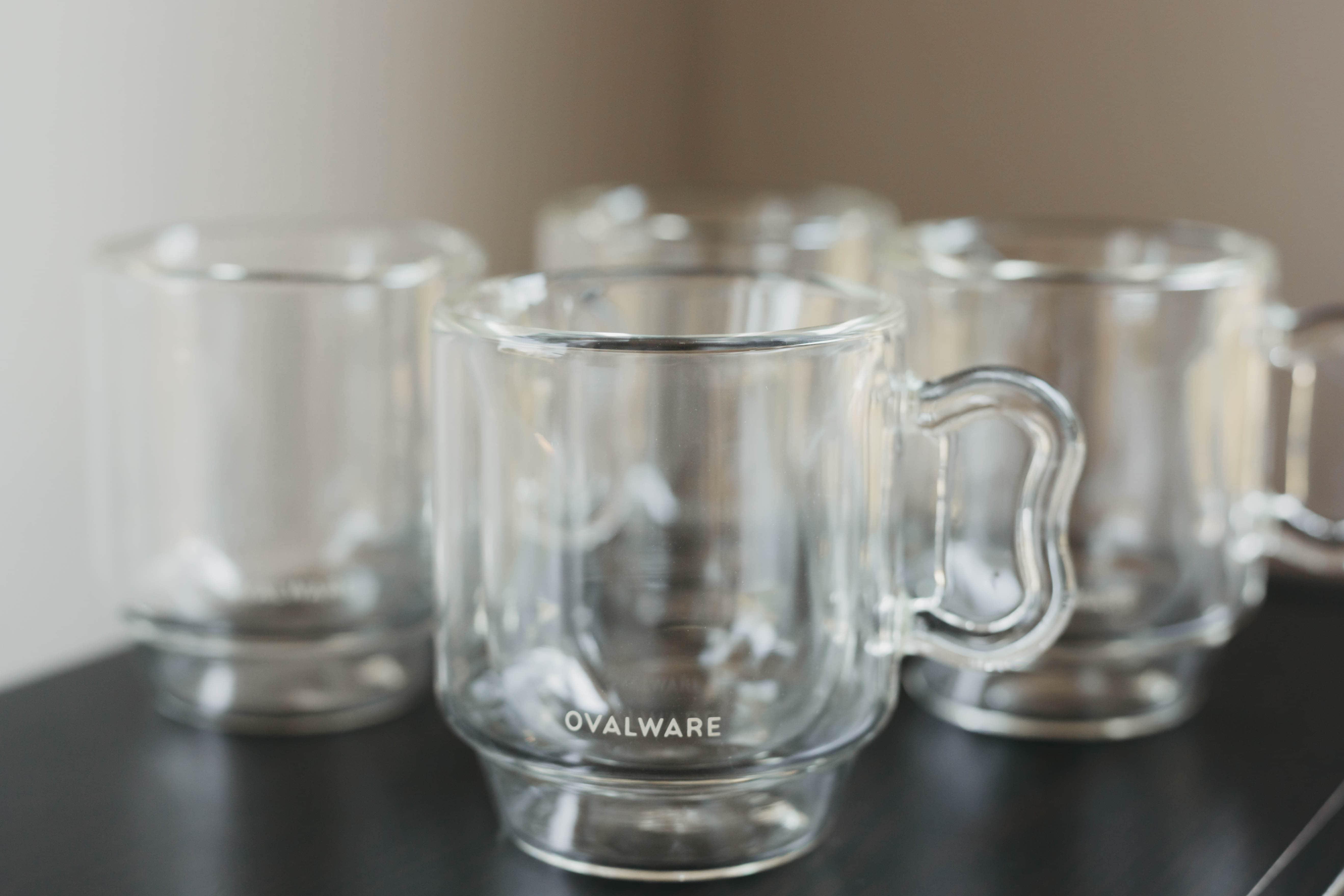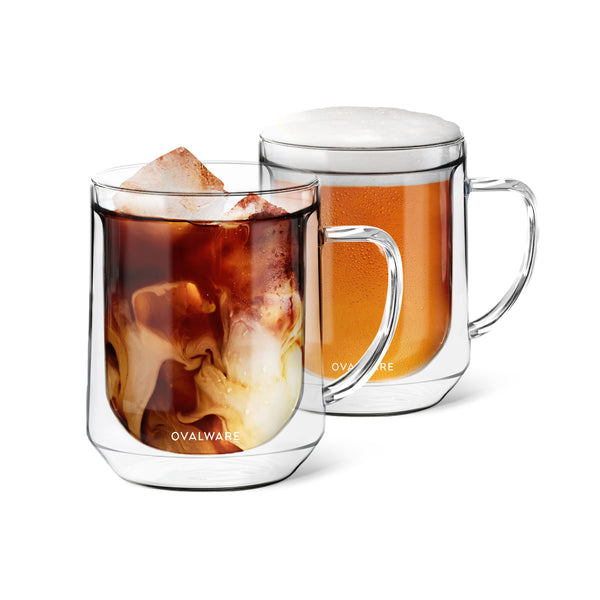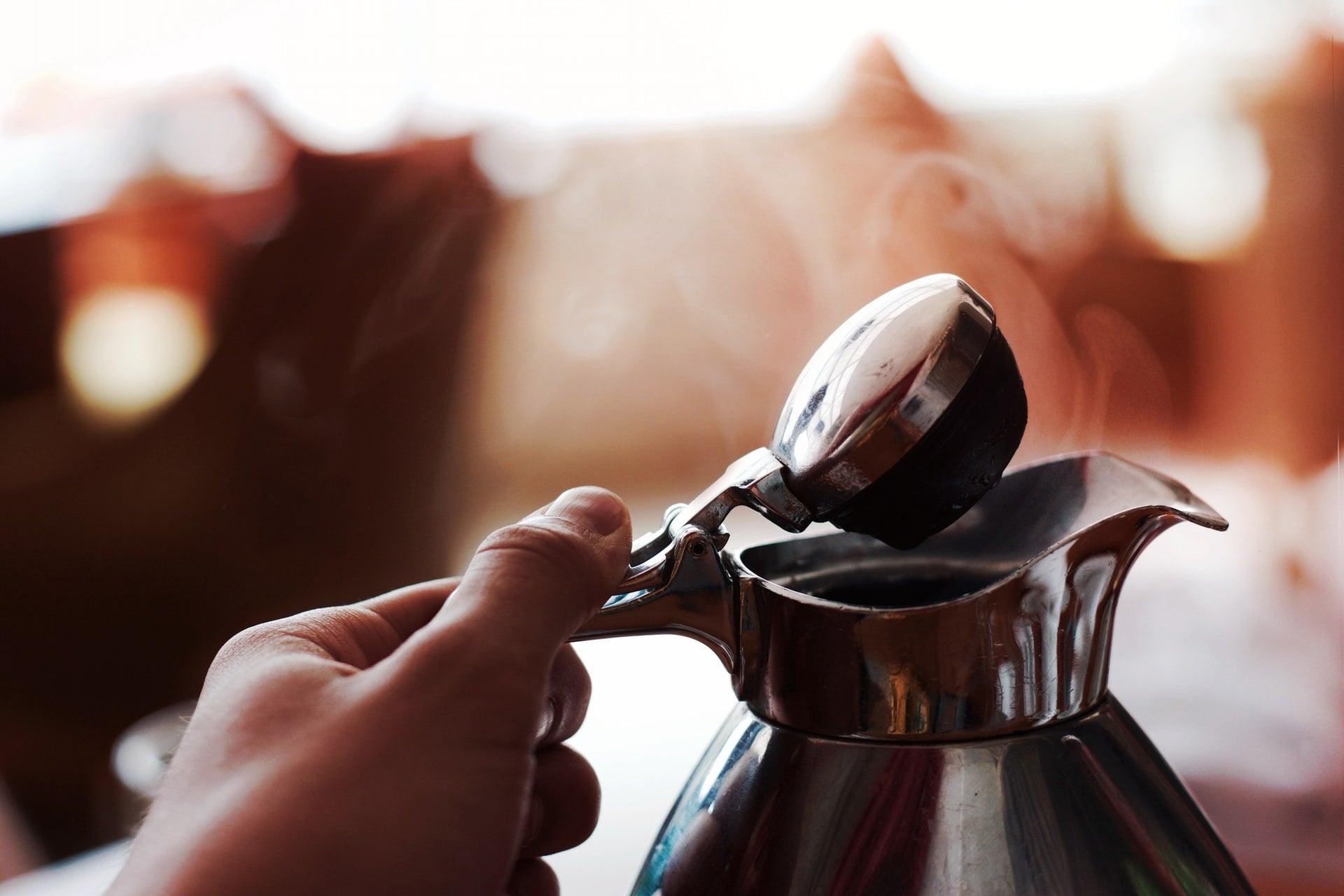
Coffee Cup Buying Guide - How to Choose the Best Coffee Mug?
Coffee cups or mugs come in numerous sizes, shapes, and materials. Choosing the best coffee mug among so many options may seem difficult.
Here's a guide to help you choose the right coffee cup to have a magical coffee drinking experience.
Coffee cup Material:
The three most common types of mugs are ceramic, glass, and metal. They each have advantages and disadvantages. Ceramic is the most common material used to make coffee cups. hey tend to be affordable, but they can crack or chip if handled roughly or exposed to hot liquids or sinks. Ceramic mugs are dishwasher safe and microwavable.
A wide range of shapes, sizes, and styles are available in glass. Many people prefer glass coffee cups since they can see the color and clarity of their beverage. However, a majority of glass cups in the market are too light or fragile for practical use. Also, glass doesn't conduct heat well, so it won't keep your drink warm.
For this reason, we have introduced our signature coffee cups and tasting glasses made with borosilicate glass. Borosilicate glass is ideal for long-term use. It will not crack when exposed to extreme heat or cold. The double-wall provides excellent thermal insulation. These cups look beautiful and are easy to stack.
Stainless steel is another good material for coffee mugs. They are durable, insulate fairly well, and are, of course, rust-free. However, metal cups are not dishwasher safe.
Melamine or stoneware are some other materials used for coffee cups.
Choosing the right size and height:

The most common size of a coffee mug is 12 ounces. This is generally the standard size in restaurants and cafes. However, an average person may only need 8 to 10 ounces of coffee, depending on how strong you like it. You can use a smaller cup if you want a single serving or if you prefer to drink your coffee slower.
In addition, smaller cups are ideal for home-brewed coffee since they can be easily refilled. A bigger mug will suit you if you intend to use it on the go.
Another thing to consider when choosing a coffee cup is how high it stands from the bottom to the rim. A higher mug allows more coffee crema to form inside the cup, which improves the aroma. However, taller mugs are inconvenient for people who need only a few sips.
One-handle vs two-handle mugs:
You might find it more relaxing to enjoy your coffee in a double-handle mug if it's just you and your partner. However, you should choose a one-handed cup if you make coffee for a large group of people. It is easy to serve coffee to everyone without too many handles.
Travel mugs:
Another type of coffee cup is the travel mug. They usually come with a lid that prevents spills or have rubber grips, so they are easy to carry around. These are great for people who are always on the move and need to transport their drinks.
You should carry your own cup even if you are not a frequent traveler. The use of disposable cups rather than reusable cups harms the environment in more than one way.
Coffee Maker Compatibility:
Before buying a coffee mug, you will also need to check if it is compatible with your coffee maker. Some coffee makers are designed to make optimal use of the mugs. Therefore, only certain models will work with the machine.
Additional features:
The main function of a coffee mug is obviously to hold liquid, but it may also come with additional features such as temperature control. These devices can be connected to your smartphone and maintain a set temperature. You can also go for personalized mugs, cups with lids, or silicone sleeves.
While these features are nice-to-have, it's best to prioritize your needs and choose a mug that is effective for what you require.
How to Take Care of a Coffee Mug?
Coffee mugs, in general, are pretty durable, but some factors may shorten their lifespan. Following these tips will ensure that you enjoy your coffee cups for longer:
- Always use a gentle hand when handling your mugs.
- Avoid putting the coffee mug in the dishwasher, even if it is labeled as dishwasher safe. It can lead to peeling and flaking of paint and may result in chipping and cracking of the design.
- Use a coaster or trivet when placing your cup on surfaces that can be easily stained or scratched, like wood or glass.
- Do not let your cups stand in the sun to dry. This can cause fading of the color.
- Avoid using abrasive cleaners to scrub away stains. Instead, use warm water and dishwashing soap. For best results, soak the cup overnight in a mixture of salt and vinegar before washing it.
- Make sure your coffee mug is 100% dry before storing it to prevent mold and mildew from forming inside.
- Do not wrap it in a paper towel, as the moisture may cause wrinkles, and getting rid of them can be difficult.
- It's best to use a lint-free cloth to absorb the excess moisture.
If you live in a humid environment, consider storing your coffee cups in the dishwasher or cabinets to keep them away from water.
How much will you pay for a Coffee Cup?
When buying coffee mugs, prices may vary. An average coffee cup costs between $10 - $30, depending on factors such as material, size, design, and extra features.
Mugs made of ceramic are more affordable than those made of stainless steel or toughened glass. Plastic or paper cups are even cheaper, but those are not recommended for several reasons.
Conclusion:
Which coffee mug is right for you? The answer depends on your personal preferences.
There is, of course, the option of purchasing more than one mug. This way, there will always be clean coffee mugs available and backups in case one is damaged.
Consider getting a standard coffee cup made from ceramic or toughened glass to use at home. Travel mugs should have lids made from a durable, thermal insulator material, such as stainless steel.





Leave a comment
This site is protected by hCaptcha and the hCaptcha Privacy Policy and Terms of Service apply.